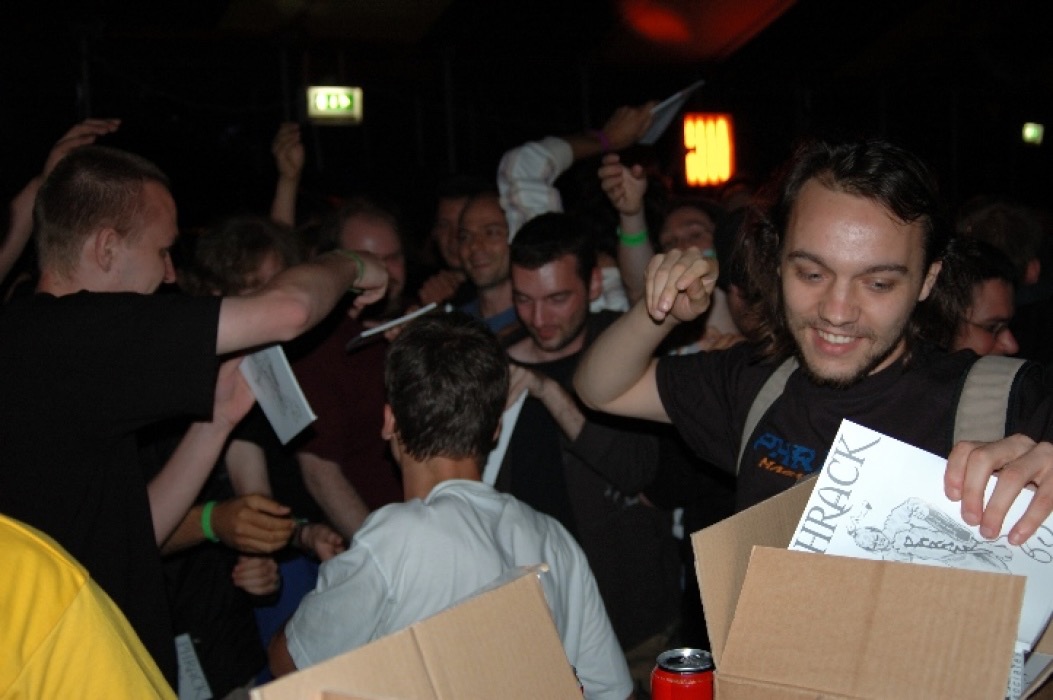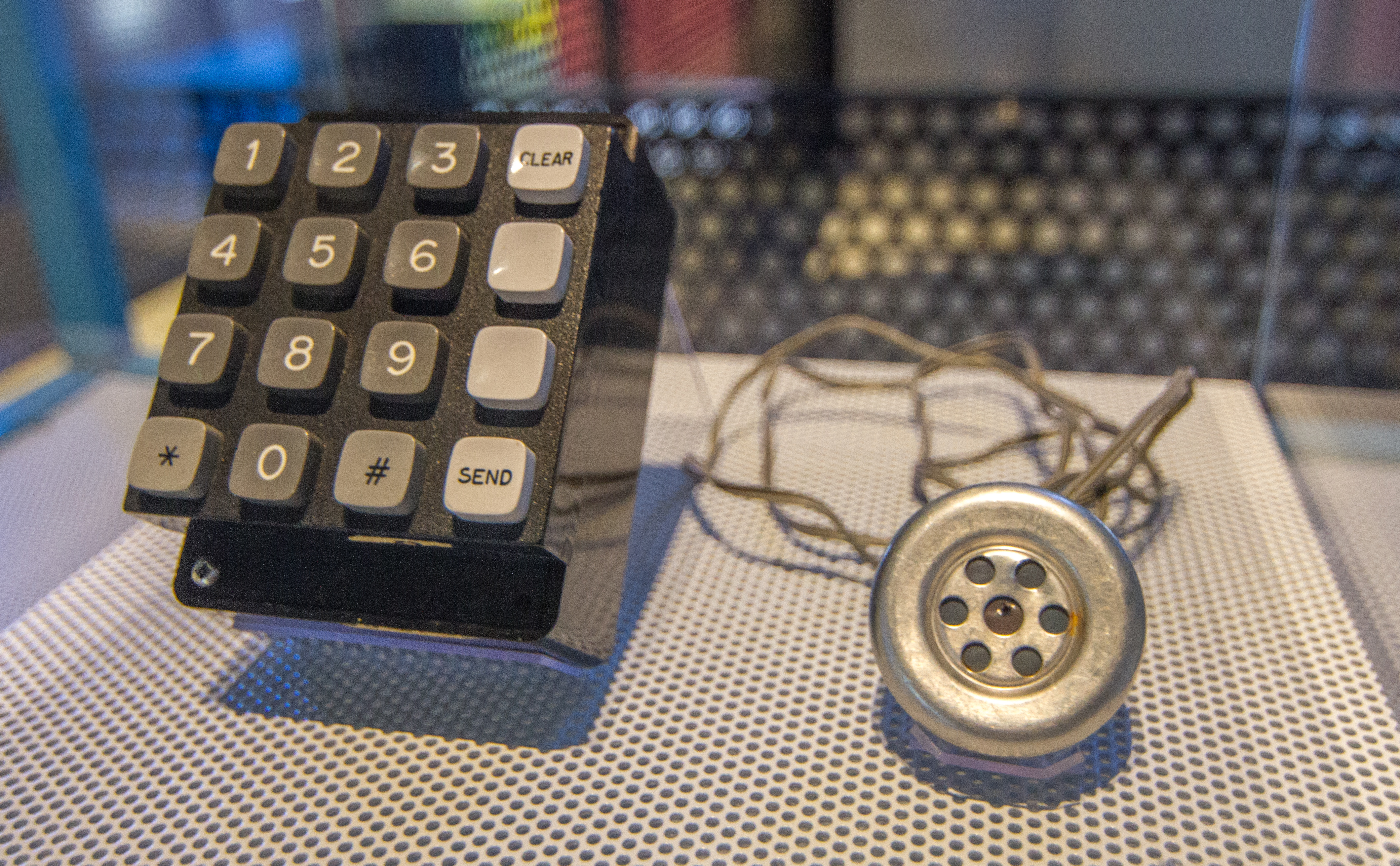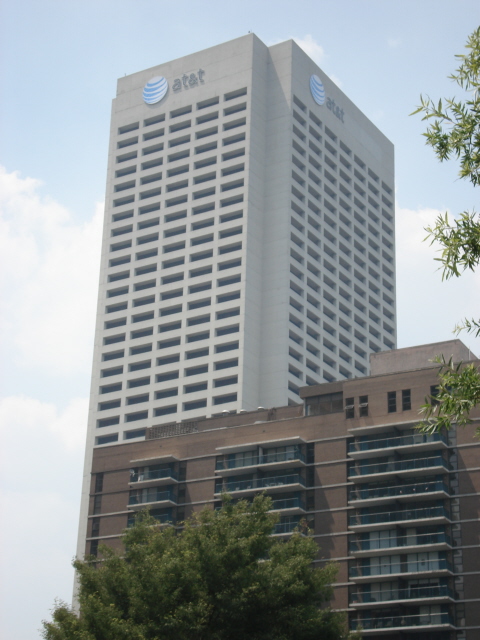|
Phrack
''Phrack'' is an e-zine written by and for hackers, first published November 17, 1985. Described by Fyodor as "the best, and by far the longest running hacker zine," the magazine is open for contributions by anyone who desires to publish remarkable works or express original ideas on the topics of interest. It has a wide circulation which includes both hackers and computer security professionals. Originally covering subjects related to phreaking, anarchy and cracking, the articles also cover a wide range of topics including computer and physical security, hacking, cryptography, counter culture and international news. ''Phrack'' "has had its finger on the pulse of hacker culture", and is considered both a handbook and manifesto for hackers. Publications E-Zine Releases Issues of ''Phrack'' are divided in volumes, covering 1 or more years of publication. Hardcover Releases There were 3 hardcover releases. Each hardcover release contained most (but not all) articles of the E ... [...More Info...] [...Related Items...] OR: [Wikipedia] [Google] [Baidu] |
Knight Lightning
Craig Neidorf (born 1969), Knight Lightning, was one of the two founding editors of ''Phrack'' Magazine, an online, text-based ezine that defined the hacker mentality of the mid 1980s. Craig, along with ''Phrack'' co-founder Randy Tischler (aka Taran King), came up with the concept of ''Phrack'' and published it from 1985 onwards. The ''Phrack'' newsletters were recognized for providing very informative updates of the national scene considering their oblique sources and served as a bible to the hackers of the day. In 1990, Neidorf was facing 31 years in jail after being arrested and charged with receiving a document stolen from BellSouth, and with publicly distributing it online. BellSouth described the document, on the subject of the inner workings of the Enhanced 911 system, as being worth US$79,449 [...More Info...] [...Related Items...] OR: [Wikipedia] [Google] [Baidu] |
Phreaking
Phreaking is a slang term coined to describe the activity of a culture of people who study, experiment with, or explore telecommunication systems, such as equipment and systems connected to public telephone networks. The term ''phreak'' is a sensational spelling of the word ''freak'' with the ''ph-'' from '' phone'', and may also refer to the use of various audio frequencies to manipulate a phone system. ''Phreak'', ''phreaker'', or ''phone phreak'' are names used for and by individuals who participate in phreaking. The term first referred to groups who had reverse engineered the system of tones used to route long-distance calls. By re-creating these tones, phreaks could switch calls from the phone handset, allowing free calls to be made around the world. To ease the creation of these tones, electronic tone generators known as blue boxes became a staple of the phreaker community. This community included future Apple Inc. cofounders Steve Jobs and Steve Wozniak. The blue box ... [...More Info...] [...Related Items...] OR: [Wikipedia] [Google] [Baidu] |
Phreak
Phreaking is a slang term coined to describe the activity of a culture of people who study, experiment with, or explore telecommunication systems, such as equipment and systems connected to public telephone networks. The term ''phreak'' is a sensational spelling of the word ''freak'' with the ''ph-'' from ''phone'', and may also refer to the use of various audio frequencies to manipulate a phone system. ''Phreak'', ''phreaker'', or ''phone phreak'' are names used for and by individuals who participate in phreaking. The term first referred to groups who had reverse engineered the system of tones used to route long-distance calls. By re-creating these tones, phreaks could switch calls from the phone handset, allowing free calls to be made around the world. To ease the creation of these tones, electronic tone generators known as blue boxes became a staple of the phreaker community. This community included future Apple Inc. cofounders Steve Jobs and Steve Wozniak. The blue box er ... [...More Info...] [...Related Items...] OR: [Wikipedia] [Google] [Baidu] |
Phreaking
Phreaking is a slang term coined to describe the activity of a culture of people who study, experiment with, or explore telecommunication systems, such as equipment and systems connected to public telephone networks. The term ''phreak'' is a sensational spelling of the word ''freak'' with the ''ph-'' from '' phone'', and may also refer to the use of various audio frequencies to manipulate a phone system. ''Phreak'', ''phreaker'', or ''phone phreak'' are names used for and by individuals who participate in phreaking. The term first referred to groups who had reverse engineered the system of tones used to route long-distance calls. By re-creating these tones, phreaks could switch calls from the phone handset, allowing free calls to be made around the world. To ease the creation of these tones, electronic tone generators known as blue boxes became a staple of the phreaker community. This community included future Apple Inc. cofounders Steve Jobs and Steve Wozniak. The blue box ... [...More Info...] [...Related Items...] OR: [Wikipedia] [Google] [Baidu] |
Erik Bloodaxe (hacker)
Chris Goggans, who used the name Erik Bloodaxe in honor of the Viking king Eric I of Norway, is an American hacker, founding member of the Legion of Doom group, and a former editor of ''Phrack'' magazine. Loyd Blankenship, aka The Mentor, described Goggans/Bloodaxe as "the best hacker I ever met". Career History Around 1990-1991 Goggans and some other Legion members set up a computer security firm, Comsec, which went out of business by 1992. He later became a senior network security engineer for WheelGroup, a network security group. In closing remarks at a 1995 conference, Goggans remarked that the global hacker community was disorganized and uncoordinated, suggesting that they should focus an attack on some foreign country, such as France. , Goggans is an recognized expert on information security. He has performed network security assessments for some of the world's largest corporations, including all facets of critical infrastructure, with work spanning 22 countries across fo ... [...More Info...] [...Related Items...] OR: [Wikipedia] [Google] [Baidu] |
Hacker (computer Security)
A security hacker is someone who explores methods for breaching defenses and exploiting weaknesses in a computer system or network. Hackers may be motivated by a multitude of reasons, such as profit, protest, information gathering, challenge, recreation, or evaluation of a system weaknesses to assist in formulating defenses against potential hackers. The subculture that has evolved around hackers is often referred to as the "computer underground". Longstanding controversy surrounds the meaning of the term "hacker." In this controversy, computer programmers reclaim the term ''hacker'', arguing that it refers simply to someone with an advanced understanding of computers and computer networks and that ''cracker'' is the more appropriate term for those who break into computers, whether computer criminals ( black hats) or computer security experts ( white hats). A 2014 article noted that "the black-hat meaning still prevails among the general public". History Birth of subcult ... [...More Info...] [...Related Items...] OR: [Wikipedia] [Google] [Baidu] |
Operation Sundevil
Operation Sundevil was a 1990 nationwide United States Secret Service crackdown on "illegal computer hacking activities." It involved raids in approximately fifteen different cities and resulted in three arrests and the confiscation of computers, the contents of electronic bulletin board systems (BBSes), and floppy disks. It was revealed in a press release on May 9, 1990. The arrests and subsequent court cases resulted in the creation of the Electronic Frontier Foundation. The operation is now seen as largely a public-relations stunt. Operation Sundevil has also been viewed as one of the preliminary attacks on the Legion of Doom and similar hacking groups. The raid on Steve Jackson Games, which led to the court case ''Steve Jackson Games, Inc. v. United States Secret Service'', is often attributed to Operation Sundevil, but the Electronic Frontier Foundation states that it is unrelated and cites this attribution as a media error. The name comes from the Sun Devil Stadium of Arizon ... [...More Info...] [...Related Items...] OR: [Wikipedia] [Google] [Baidu] |
United States Secret Service
The United States Secret Service (USSS or Secret Service) is a federal law enforcement agency under the Department of Homeland Security charged with conducting criminal investigations and protecting U.S. political leaders, their families, and visiting heads of state or government. Until 2003, the Secret Service was part of the Department of the Treasury, as the agency was founded in 1865 to combat the then-widespread counterfeiting of U.S. currency. Primary missions The Secret Service is mandated by Congress with two distinct and critical national security missions: protecting the nation's leaders and safeguarding the financial and critical infrastructure of the United States. Protective mission The Secret Service is tasked with ensuring the safety of the president of the United States, the vice president of the United States, the president-elect of the United States, the vice president-elect of the United States, and their immediate families; former presidents, their sp ... [...More Info...] [...Related Items...] OR: [Wikipedia] [Google] [Baidu] |
BellSouth
BellSouth, LLC (stylized as ''BELLSOUTH'' and formerly known as BellSouth Corporation) was an American telecommunications holding company based in Atlanta, Georgia. BellSouth was one of the seven original Regional Bell Operating Companies after the U.S. Department of Justice forced the American Telephone & Telegraph Company to divest itself of its regional telephone companies on January 1, 1984. In a merger announced on March 5, 2006, and executed on December 29, 2006, AT&T Inc. (originally SBC Communications) acquired BellSouth for approximately $86 billion (1.325 shares of AT&T for each share of BellSouth). The merger also consolidated ownership of Cingular Wireless and Yellowpages.com, both of which were joint ventures between BellSouth and AT&T. With the merger completed, wireless services previously offered by Cingular Wireless were then offered under the AT&T name, and BellSouth Telecommunications (a subsidiary of Bell Operating Company) began doing business as AT&T Southe ... [...More Info...] [...Related Items...] OR: [Wikipedia] [Google] [Baidu] |
Enhanced 911
Enhanced 911, E-911 or E911 is a system used in North America to automatically provide the caller's location to 911 dispatchers. 911 is the universal emergency telephone number in the region. In the European Union, a similar system exists known as E112 (where 112 is the emergency access number) and known as eCall when called by a vehicle. An incoming 911 call is routed to a Public Safety Answering Point (PSAP), which is a call center operated by the local government. At the PSAP, the call is answered by a specially trained official known as a 9-1-1 dispatcher. The dispatcher's computer receives information from the telephone company about the physical address (for landlines) or geographic coordinates (for wireless) of the caller. This information is used to dispatch police, fire, medical and other services as needed. Call routing Landline routing Calls to 911 over the public switched telephone network (PSTN) are routed to a special router (known as Selective Router, or 9-1-1 Tand ... [...More Info...] [...Related Items...] OR: [Wikipedia] [Google] [Baidu] |
Mirror Website
Mirror sites or mirrors are replicas of other websites or any network node. The concept of mirroring applies to network services accessible through any protocol, such as HTTP or FTP. Such sites have different URLs than the original site, but host identical or near-identical content. Mirror sites are often located in a different geographic region than the original, or upstream site. The purpose of mirrors is to reduce network traffic, improve access speed, ensure availability of the original site for technical or political reasons, or provide a real-time backup of the original site. Mirror sites are particularly important in developing countries, where internet access may be slower or less reliable. The maintainers of some mirrors choose not to replicate the entire contents of the upstream server they are mirroring because of technical constraints, or selecting only a subset relevant to their purpose, such as software written in a particular programming language, runnable on a sing ... [...More Info...] [...Related Items...] OR: [Wikipedia] [Google] [Baidu] |




